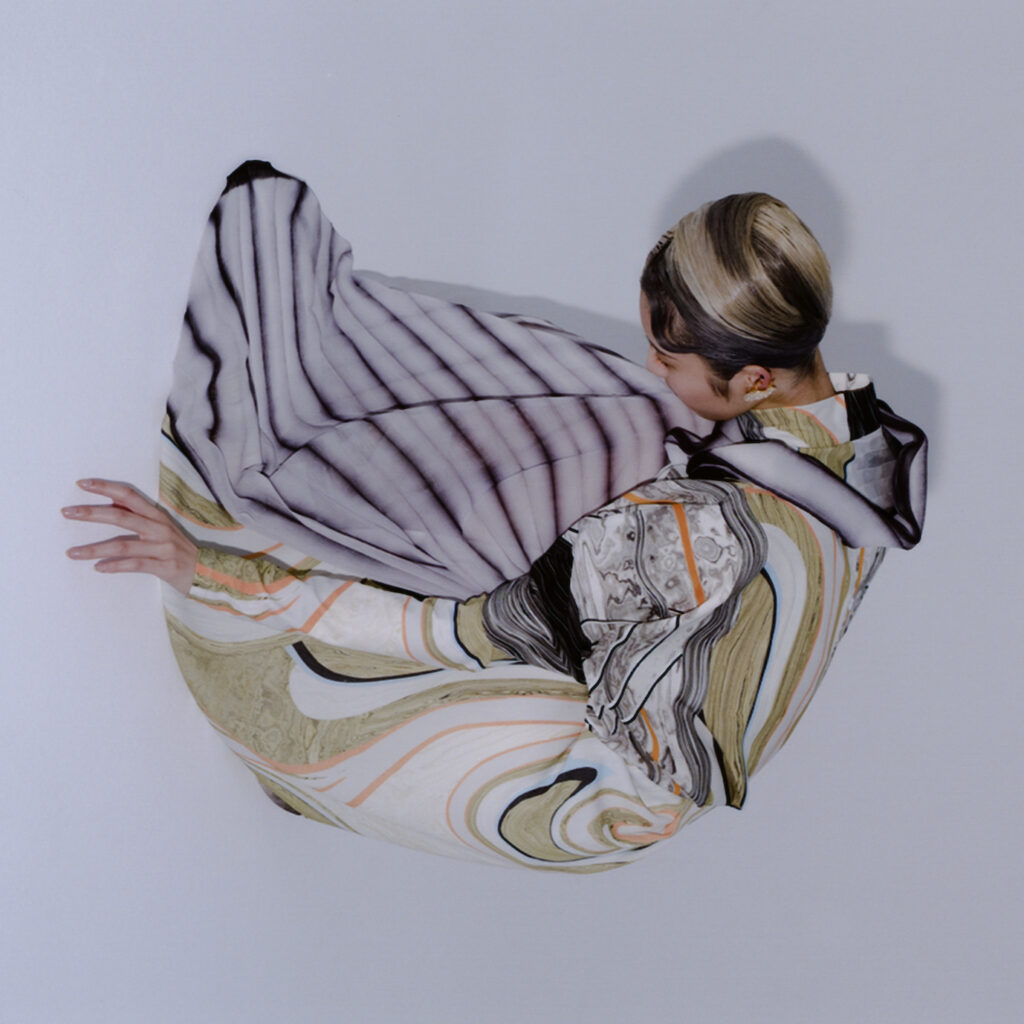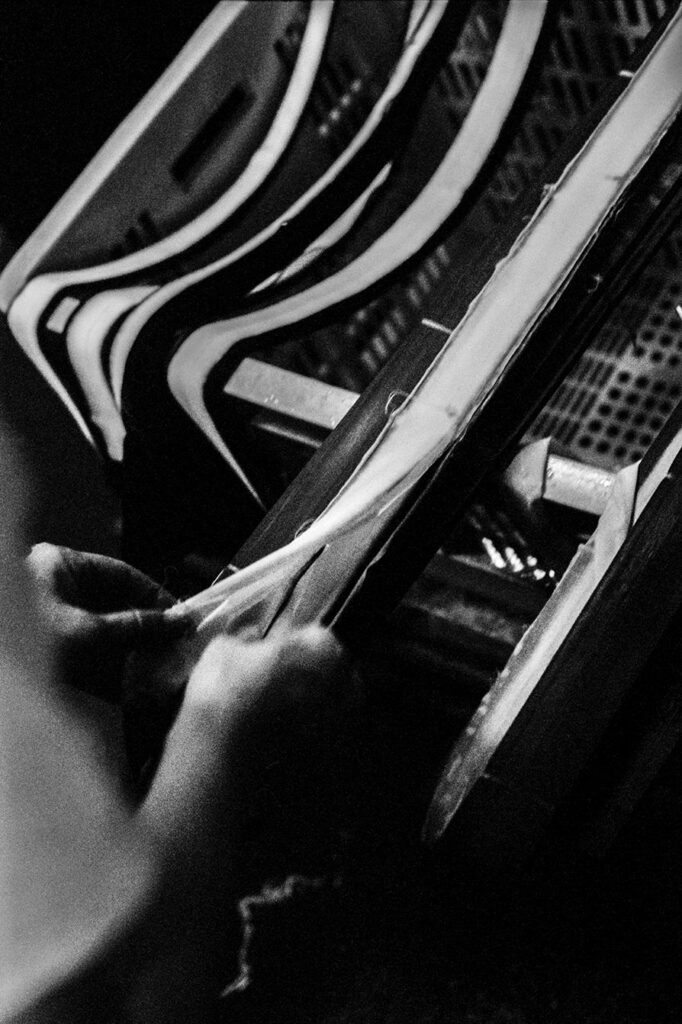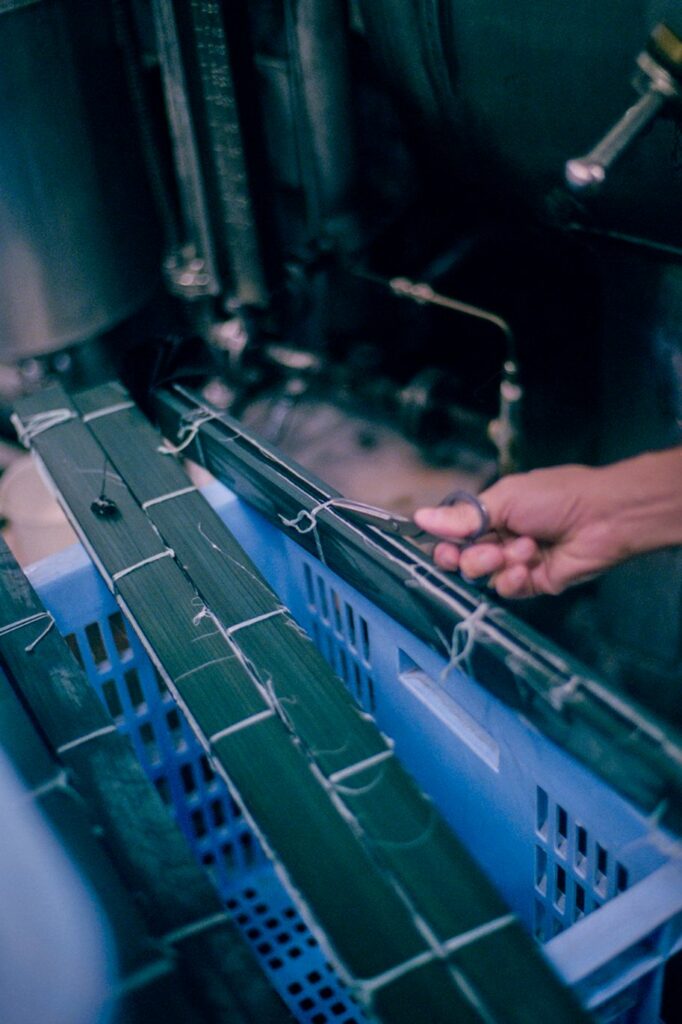In the Light of the Moon: Interview of Mame Kurogouchi

Just like any epic tale, this season starts with a silvery beam of light that shines down upon the sleeping form of Maiko Kurogouchi. As sleep pulls away from her senses, a striking motif of stripes blending light into darkness imprints itself on her mind. Upon morning, her quest begins. After all, making garments with meaning has always been her destiny.
Bright edges moving across pleats, images blurred… What caught your attention this season?
The window again! As always, it is an image from my daily life, currently confined to Japan, which ignites my visual references for the season. One night, I woke up and the first thing I saw was this beautiful striped shape on my wall – the shadow created by the window and the moon. The edges were blurring and bending as they encountered objects like the sofa. Then I started observing these light patterns more carefully and liked how the light diffused and seemed to dissolve into night.
How did that translate into your work?
After that, I visited a factory in Kyoto, to discuss the dying techniques used there. Some of them involved Itajime Shibori, a method of making patterns by pressing cloth between carved wooden boards and only dying the exposed edges. It felt appropriate to use this method to transcribe the patterns of light and shadows that I had seen because the process creates a natural gradient that reproduces the way the light spectrum blends its colors into one another.
As for the film, I drew inspiration from a book by Toshiyuki Horie, who is a novelist as well as a professor of French literature at a university in Tokyo. In the book, there was something about how the way windows and a painting from American artist Andrew Wyeth called “Geranium” became these viewports into the house. Their succession – windows, walls, rooms, painting, over and over – became this complex composition. In our Fall 2021 movie, you’ll see that we replicated this feeling of mise en abime. It’s a clever trick with frames and mirrors, almost but not quite as a single shot. It made me think of traveling to the moon, and connected to my inspiration of the moonlight on the walls.
Back to the question, human hands are the only tool that can really express both the imagery I saw and the vague feeling of the night.

Could this not be replicated with other techniques, say, digital printing?
Of course, similar imagery can be produced using digital printing, but what I always find interesting in heritage techniques such as these is how apparent the hand of the craftsperson is in the result, and the precious imprecision that creates imperceptible variations that nonetheless makes each item unique in a way.
Digital tools bring a crispness to a visual that doesn’t exist in the real world. Think about how our eyes perceive images in the darkness. Lines are blurred, colours blend into each other. There’s something diffuse to memories in the night – think of Polaroids and film photography.
Were you trying to make a point about craftsmanship?
Dialogue with artisans is at the heart of what I do and has always been. Such discussions are essential in creating and also finding new ways of applying crafts and textile tradition into a contemporary setting. Take the marble print. It sounds simple but it’s a rare technique that is now only done in this one atelier in Kyoto. Everything is done by hand, with blocks hand carved. There’s no textbook to learn how to do it, it relies on the knowledge and experience of the craftsperson. Ultimately, you cannot copy and paste the subtlety of artisanal imperfection.
How has the past year affected how you design?
What we’ve experienced in the past year has felt like a return to childhood for me. Then, brands and logos didn’t matter. Only what felt beautiful or magical did; a view in the mountains; a ray of sunlight cutting an interesting pattern on a wall; or a flower you found pretty. Now that I’ve grown up, I find that I’m still sensitive to the same ideals – finding what is precious to me – and this is what I’ve tried to embody in my collections. This is perhaps why this season is more urbane and pared-back than previously, to let these feelings come through, without distractions.

Is the notion of sustainability also a part of your approach?
The discussion around sustainability that everyone is having in the industry now is certainly a good thing. Certainly, it’s opened many possibilities and conversations that involve both technical innovation and artisanal innovation, to come results that bring out the best in what all of us do.
From the very beginning of my career, I’ve always believed that the true power of design and craft is to be a vehicle for us to pass ideas on to the next generations. So what’s important to fashion design is to take on board that we have to imagine and produce items that have meaning and are made to last. Not just for our own transient enjoyment but because they, and the world we live in, must be passed on to the next generation.



